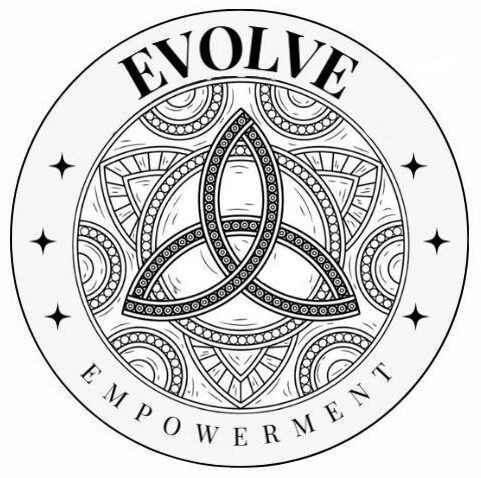At first, it is a simple whisper. A longing we cannot quite name, a subtle tug beneath the noise of life. And in this silent longing—for meaning, for grounding, for peace—spirituality often finds its entrance. Not as a dogma or a temple-bound faith, but as a pulse within us that beats mightiest in our loneliest, most broken hours.
Today, mental health is on everyone’s lips, but too often it is treated as a mechanical malfunction of the brain—something to be fixed, silenced, regulated. But what if the cure lies not just in pills or psychoanalysis, but in relearning how to talk to our soul? What if spirituality is not just an “alternative path,” but a missing piece of the puzzle?
Let’s explore this elusive and deeply personal intersection – where inner transcendence meets modern psychology – and see how it could save a life, or at the very least, lighten the unbearable.
What Exactly Is Spirituality—and What Does It Have to Do with Your Mind?
Spirituality defies clean definitions. It’s not a checklist of beliefs, nor a ritual tied to a holy day. It’s the yearning for connection—to something larger than ourselves. For some, that something is God. For others, it’s energy, consciousness, the unfolding of life itself.
It’s what Rilke called “the inner space of the world.”
Religion may be one path into this space, but it is not the only one.
Mental well-being isn’t just about managing symptoms. It’s about finding a reason to keep going when everything collapses.
And here, spirituality can be a lifeline. It offers a framework to make sense of suffering, and in the darkest valleys, a strange kind of lantern.
This isn’t new. Indigenous cultures, ancient Greeks, and early Christian mystics—all understood the soul’s role in health. Only in the industrial age did we begin severing the psyche from the sacred. Psychology, at its birth, was still “the study of the soul.” Now, it is slowly circling back.
Rituals, Mindfulness, and the Alchemy of Daily Sacredness
Α woman in a group therapy group who found healing not through cognitive restructuring but by lighting a candle every morning and whispering a prayer, “Lord Jesus Christ, have mercy on us.”
That was her ritual. It grounded her. Rituals—whether prayer, breathwork, walking in nature, or simply gazing at the stars—can restore coherence to minds in chaos. They create rhythm where life has fractured.
Mindfulness, too, has burst into the mainstream—often stripped of its spiritual roots—but its power lies in its presence. Sitting with what is. Seeing without judgment. Not fixing, just being. And in that being, slowly, something shifts.

What Science Has to Say (Hint: It’s Listening Now)
The scientific world, once allergic to the spiritual, is now cautiously intrigued. Research from the American Psychological Association and institutions like Harvard Medical School has shown that individuals who identify as spiritual tend to have lower rates of depression, anxiety, and substance abuse.
How? Possibly because spirituality activates the prefrontal cortex, tempers the amygdala, and fosters a sense of meaning that no diagnosis ever could.
One longitudinal study published in JAMA Psychiatry found that individuals who regularly engaged in spiritual practices had thicker brain cortices, regions associated with stress regulation and emotional processing. Another found a 75% reduction in suicide risk among those with a strong spiritual framework.
Then there are the stories. A grieving father who found solace through contemplative prayer. A trauma survivor whose nightly ritual of writing to the divine helped her sleep for the first time in years. Or even my friend who swears the guided meditative prayer he discovered online rescued him from the edge.
The Psychology Behind Spiritual Influence
From a purely psychological standpoint, spirituality helps reframe suffering. It can transform the question from “Why is this happening to me?” to “What can this teach me?” That subtle shift in perspective can change everything.
Spirituality fosters self-compassion. It supports identity integration. It introduces mystery—something modern therapy often lacks. And sometimes, mystery is what saves us, not answers.
In dialectical behavior therapy (DBT), clients are taught to “radically accept” reality. In spiritual language, this is surrender. In CBT, therapists speak of cognitive reappraisal; in Buddhism, it’s non-attachment. The tools overlap more than we often admit.
Tailoring Your Own Spiritual Practice for Mental Clarity
There is no one-size-fits-all in spirituality. Some find comfort in sacred texts. Others in silence, art, music, and even chaos. Your spiritual path doesn’t need to look holy. It just needs to feel true.
Begin by listening to what brings you peace, awe, or tears. Follow that. It might be as simple as lighting incense and breathing slowly. Or it might be exploring mystery and inner codes, journaling your dreams, or chanting under the moon.
Reflection is key. Not just doing—but asking: How did this make me feel? What did I discover?
Cultural background matters, too. A ritual that soothes one person may trigger another. Respect that. Let your spiritual life mirror your personal mythology.
And most of all: integrate. Let your sacredness live not only in retreats or cathedrals, but in commutes, in dishwashing, in the way you speak to yourself at 3 AM.

Unraveling the Myths, Meeting the Skeptics
Spirituality in mental health is still surrounded by suspicion. Some view it as pseudoscience, others as escapism. And they’re not entirely wrong.
Spiritual bypassing—the tendency to use spirituality to avoid facing psychological wounds—is a real danger. Not all rituals heal. Some number. Not every “higher self” is wise; some are just trauma in costume.
So, how do we navigate this? With discernment. Mental health professionals must learn the difference between therapeutic spirituality and illusion. And skeptics must be met—not with preaching—but with presence.
Often, the most resistant are the ones who once believed deeply and were burned. Trust, in this context, is sacred ground.
You can read similar content here.
The Unfolding Conclusion: When the Inner and Outer Finally Shake Hands
We don’t have to choose between therapy and prayer, between SSRIs and tranquility, between neuroscience and the soul. Wholeness is already happening – in quiet moments, in whispered prayers and mantras, in broken hearts that are slowly learning to heal.
Spirituality, when honest, doesn’t pretend to fix everything. But it helps us hold what can’t be fixed.
And perhaps that’s enough.
If you feel called to explore further, start small. Light a candle. Take a breath. Listen inward. Or let a digital guide whisper old truths to you in new ways: Start your journey here.

Frequently Asked Questions (FAQ)
What is the difference between spirituality and religion?
Spirituality is a personal connection to something greater, while religion involves structured beliefs and practices within a community. They can overlap but are not the same.
Can spirituality replace therapy?
No. Spirituality can support therapy, but it’s not a replacement for clinical treatment, especially in severe mental health conditions.
Is there scientific proof that spirituality improves mental health?
Yes. Numerous studies show correlations between spiritual practices and reduced depression, anxiety, and increased life satisfaction.
What if I’m not religious? Can I still be spiritual?
Absolutely. Spirituality is about meaning and connection, not belief in a specific deity or tradition.
Isn’t this just new-age nonsense?
Not at all. Modern psychology increasingly acknowledges the value of spirituality when approached mindfully and ethically.
📚 Bibliography
- Koenig, H. G. (2012). Handbook of Religion and Health. Oxford University Press.
- Pargament, K. I. (2007). Spiritually Integrated Psychotherapy: Understanding and Addressing the Sacred. Guilford Press.
- Miller, L. (2015). The Spiritual Child: The New Science on Parenting for Health and Lifelong Thriving. St. Martin’s Press.
- American Psychological Association. (2021). Spirituality and Health: APA Resources.
Disclosure: This article may contain affiliate links. If you click on these links and make a purchase, I may earn a commission at no extra cost to you.

